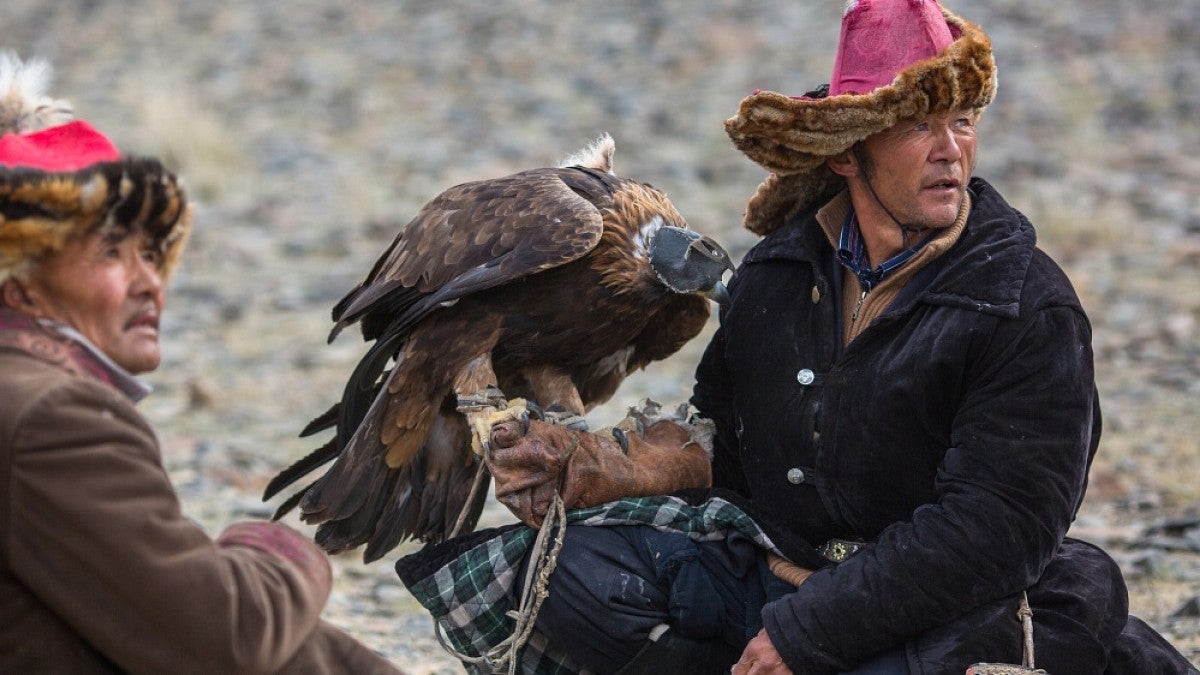Bones hold many facts, and under a discerning eye they can also help tell a story.
Anthropology professors Jeanne McLaughlin and Pat O’Grady are going to the far corners of the world to help find and tell those stories. Using their expertise in archaeology and forensics, they’re about to launch a new field school program in the high steppes of Kyrgyzstan that will help the local government piece together the ancestral origins of the country and its people.
McLaughlin and O’Grady, who both are affiliated with the Museum of Natural and Cultural History, hope to take about 12 students for a five-week, six-credit course from Aug. 13 to Sept. 14.
But why Kyrgyzstan? Both researchers point to a common acquaintance and McLaughlin’s sister.
“Interest in the Central Asian region was sparked years ago through coursework with Esther Jacobson-Tepfer, who taught classes on nomadic art in the art history department,” O’Grady said. “Our interest in Kyrgyzstan was fueled by communications from Jeanne’s sister, Win McLaughlin, who was conducting Fulbright research on paleontological and geological objectives there in 2015.”
Apparently, Win McLaughlin kept sending back information and photos showing damaged archaeological sites and exposed artifacts. The messages suggested that the professional community in Kyrgyzstan was short-handed, underfunded and facing a mounting tide of site damage as the construction of the Chinese Belt Road and other developments began to gain momentum.
Jeanne McLaughlin and O’Grady visited Kyrgyzstan last year to make government connections, assess the feasibility of working with local authorities and identify key sites for the new field school program.
“Kyrgyzstan is an interesting and important place for many archaeological reasons, but the country also has its vision pointed toward the future,” McLaughlin said. “There is a strong push to build opportunities for scientific and environmental tourism, as well as to protect and study rare species like snow leopards, mid-Asian ibex and Marco Polo sheep. Archaeological tourism is also a significant draw in places with unique sites and rock art like Kyrgyzstan.”
McLaughlin and O’Grady believe the new field school not only will help students from different backgrounds learn key archaeological and forensic skills but also provide an immersive cross-cultural experience. Students will train alongside Kyrgyz archaeologists and have the opportunity to engage with different ethnic groups in a place that has been influenced for millennia by gene flow, trade and passage along the Silk Road.
Students also will have the opportunity to travel to Cholpon Ata and attend the World Nomad Games, an event that draws participants from more than 40 countries to compete in horseracing, archery, eagle hunting, wrestling and Ulak-tartysh — a pololike game played with a goat carcass — among other sports.
Field instruction is intensive, with eight-hour workdays at least six days a week except for days that are scheduled for field trips and other educational opportunities. Students will be trained in human osteology, fossilization, artifact identification, sedimentary analysis and many other skills. The results will be presented at professional conferences after the field season ends.
McLaughlin and O’Grady initially plan to work at a site where portions of nine human burials have been exposed in a stream terrace that is being quarried for sand and gravel. With the permission of the Kyrgyz government, the team hopes to bring the remains back for inventory, analysis and DNA tests that will provide the basis for an article prior to their return in 2019.
“We will also be working with Kyrgyz archaeologists from the American University of Central Asia at a medieval citadel site near the southwest shore of Lake Issyk Kul,” O’Grady said. “Depending on the results from the citadel excavations, we may return there for additional work in 2019.”
McLaughlin expects they will also conduct reconnaissance surveys in highlands near Ala Archa National Park this year, laying out plans for rock art research and archaeological testing of ancient living sites in development of a five-year research plan.
To learn more or apply for the new program in human osteology and archaeology field studies in Kyrgyzstan, visit the Global Education Oregon website. Applications for the program are due April 15.
—By Chakris Kussalanant, University Communications


